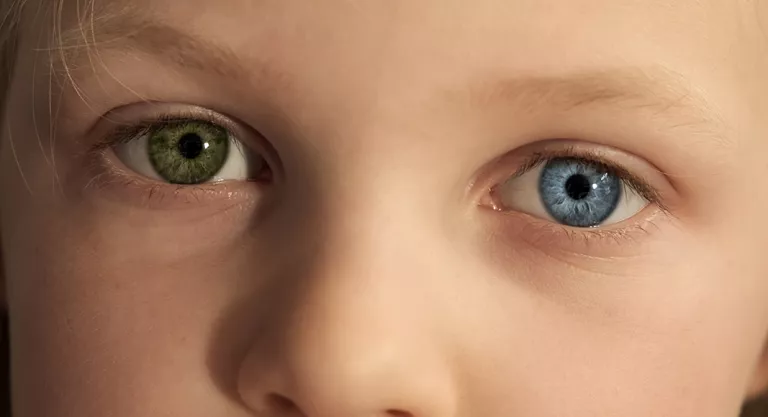Surely you have ever seen a cat with different colored eyes; for example, one blue and the other brown. This phenomenon, known as heterochromia, is not exclusive to felines, as it also occurs in dogs (such as the Husky), non-human primates, or people. In fact, the Argentine singer Nathy Peluso has each eye of a different color, a peculiarity that she shares with other celebrities such as the late singer David Bowie, the actress Jane Seymour, or Dan Aykroyd, the protagonist of Ghostbusters.
“Heterochromia – explains Dr. Carlos Lisa, ophthalmologist at the Cornea and Lens Unit of the Fernández-Vega Ophthalmological Institute – consists of an alteration of the iris pigment that causes the eyes to be of different colors. It is produced by a mutation due to the lack of melanin, which is what gives the color to the eyes. It is very rare to suffer from it, around 0.1% of the population presents it”.
Types of heterochromia and causes
Dr. Lisa points out that this alteration can affect the eyes totally, partially or centrally, and that based on this, three types of heterochromia are distinguished:
And depending on the moment in which it appears, a distinction is made between:

Dr. Royo Sans adds that in the event that heterochromia is acquired “we should always do a thorough eye exam, since it is frequently associated with ophthalmological diseases, such as intraocular inflammation, glaucoma, trauma, and can even be caused by the continued use of eye drops for glaucoma of the prostaglandin family”.
What factors determine the color of our eyes
The main factors that determine the color of our eyes are genetic, says Dr. Mariano Royo Sans, head of the Ophthalmology Service at Hospital San Rafael in Madrid: “genes determine the deposit and combinations of the different melanins; eumelanin (dark brown colour), pheomelanin (reddish-yellow colour) and white, yellow and red lipochrome”.
Dr. Lisa adds that “eye color is genetically determined by DNA, but chance also plays a role, as the grooves, fissures, and markings seen in the iris arise randomly during fetal development in the maternal womb”.
“Eye color is genetically determined by DNA, but the grooves, fissures, and markings seen in the iris arise randomly during fetal development in the womb”

It is common for a baby to be born with blue eyes and then for their irises to change color. Dr. Royo explains that newborns often have a minimal amount of melanin in the anterior part of the iris and, as they are exposed to light, the melanocytes begin to produce melanin and thus the color of the iris begins to change towards its adult coloration. At three years old the color will hardly change, although it may darken until after five or six years”.
My baby has one eye of each color, should I worry?
The head of the Ophthalmology Service at Hospital San Rafael affirms that the fact that a baby has one eye of each color “does not have to mean a disease”, but that “when he is born with heterochromia it is necessary to carry out an initial exploration of the eyes and tracking in time. Also a family survey looking for genetic alterations among close members.

“Most cases are of genetic origin and are not associated with ocular abnormalities. But, as we have said, there are congenital diseases, most of them hereditary, that present heterochromia”. According to this specialist, “simple inspection” can provide data on “diseases associated with heterochromia of the iris. In Horner’s Syndrome, in addition to heterochromia, a smaller pupil and a droopy eyelid are seen. In neurofibromatosis, nodules appear in the iris and café-au-lait spots on the skin…”.
Dr. Carlos Lisa also points out that “children born with heterochromia do not have any symptoms and it only affects aesthetics, and not the visual field. However, sometimes this pathology can be a symptom of another condition and be associated with rare diseases such as Claude-Bernand-Horner syndrome or neurofibromatosis. For this reason, once detected, it is important to go to the ophthalmologist to control its cause and rule out other diseases.”
.













